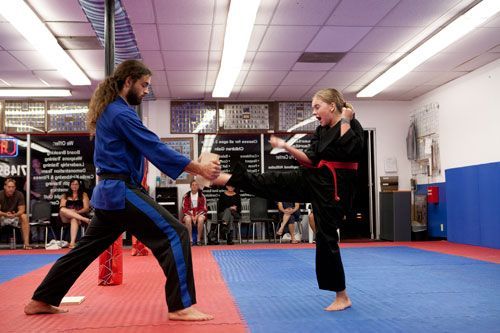What to Do if Your Child is Being Bullied at School
As a martial arts studio that deeply cares about the well-being of children, we understand that one of the most distressing situations a parent can face is when their child is being bullied at school. Bullying not only affects the victim but also has a negative impact on the overall school environment. It's crucial for parents to take action and advocate for their child's safety and well-being. In this blog, we'll guide you through the steps to address bullying in school effectively.
Step 1: Document the Bullying Incidents
Before taking any action, it's essential to have a clear understanding of what your child has been experiencing. Engage in open and empathetic conversations with your child to gather information about the bullying incidents. Ask about the who, what, when, and where of the situations they've encountered. Encourage your child to share if they've talked to teachers or lunch monitors about the bullying.
Create a document summarizing these incidents, including dates, times, locations, and descriptions of the bullying behavior. This document will be invaluable when discussing the issue with school officials.
Step 2: Schedule a Meeting with the School Principal
The first point of contact when addressing school bullying should be the school principal. Schedule a meeting with the principal to discuss your concerns. Bring the document you created in the previous step to provide a clear and concise account of the bullying incidents. Be direct and assertive about the bullying behavior your child has endured.
During the meeting, inquire about the school's anti-bullying policies and what measures will be taken to address the situation. Ask for a timeline for implementing these measures and make sure to document everything that is discussed during the meeting, including the date.
Step 3: Know Your Child's Rights
It's essential to understand that your child has the legal right to be in a safe learning environment, free from bullying. In California, this right is supported by the State constitution, which guarantees children a calm and peaceful learning environment. Bullying clearly violates this provision.
Advocate for your child by reminding the school principal of these rights and emphasize the importance of ensuring a safe environment for all students.
Step 4: Escalate the Issue if Necessary
If your initial meeting with the school principal does not result in a satisfactory resolution, don't hesitate to escalate the issue. There's a chain of command to follow:
- Contact the District Office: Reach out to the district office and report the ongoing bullying. Share the documentation from your meeting with the principal and express your continued concern for your child's safety.
- Involve the School Board: If the district office's response is still inadequate, consider taking your complaint to the school board. They can review the situation and exert additional pressure on the school to address the bullying issue.
- Seek Support from Local Representatives: Local State Assembly members may be willing to intervene on your child's behalf if all other avenues have been exhausted.
- Engage Local Media: If you do not see any meaningful change in the school's response to bullying, consider reaching out to local media outlets. Public attention can exert significant pressure on the school district to take action.
Step 5: Be an Example for Your Child
Confronting school officials about bullying can be an intimidating process, but it's essential to set an example for your child. Show them that you are committed to their safety and well-being by taking the necessary steps to address the issue.
By documenting and advocating for your child, you not only protect them but also contribute to a safer and more inclusive school environment for all students, including those who witness bullying and even the bullies themselves.
At American Tiger Martial Arts & Fitness, we believe in empowering children not only through physical training but also by promoting a safe and respectful environment. If you have any questions or need guidance during this process, please feel free to contact us at 714-899-2040. Together, we can make a difference in the lives of our children and create a community where bullying has no place.




